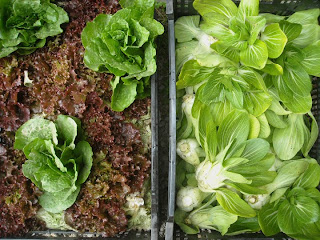Happy New Year to all. We begin 2010 with the same mantra as the beginning of last year—“best year yet.” And while the cold weather isn’t suitable for farming at the moment, we are happy for a real winter, with cold temps and lots of snow cover on the fields.
While our December vacation was truncated for various reasons, and Rebecca spent most of December in an antibioitic induced immunity suppression from a small kidney stone (all better now thanks to probiotics), we did have a chance to rest and visit friends and family. We even enjoyed a visit for our friend/old CSA member/2008 intern Lorne Carrol and wife Angela. Lorne is in the middle of a 2 year public health nurse stint in Nome, Alaska. They were right at home.
We are now in the process of pulling together our seed and equipment order for 2010. Fun and daunting at the same time, we anxiously anticipate the start of the season when we plant the first onion seed in the greenhouse in early February.
The farm has been a winter wonderland since Xmas eve, and a playground for Rocky. He grows a polar bear coat this time of year, and looks at home in the snow. We will try to post on a regular basis between now and when the season starts to keep you up to date on things. Enjoy the winter while it is here.

























